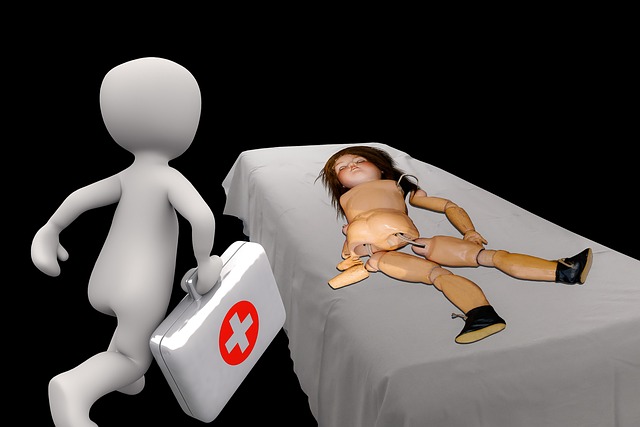Cold therapy, involving exposure to extreme cold using ice packs, is a popular natural pain management technique for migraines. By constricting blood vessels and reducing inflammation in the head and neck areas, it offers rapid relief from migraine headaches. This non-invasive method is attractive as an alternative or adjunctive treatment for chronic pain conditions like arthritis and fibromyalgia, potentially lowering reliance on medications. However, safe application is crucial; wrapping ice packs in a thin towel and limiting exposure time prevents skin issues. Individuals with certain conditions should consult healthcare professionals before trying cold therapy for migraines, but regular use can desensitize nerves and reduce future migraine intensity when incorporated into self-care routines.
“Discover a natural alternative to pain medication with cold therapy, a powerful tool for soothing chronic pain and migraines. This ancient practice involves applying cold to specific areas of the body to reduce inflammation and block pain signals.
In this comprehensive guide, we’ll explore how cold therapy works, its numerous benefits for managing migraines and other persistent pains, safety precautions, and practical strategies to integrate this simple yet effective technique into your daily routine.”
Understanding Cold Therapy: A Natural Approach to Pain Relief
Cold therapy, also known as cryotherapy, is a natural approach to managing pain that has gained popularity as an alternative to conventional medication. This method involves exposing the body to extreme cold for short periods, typically using ice packs or frozen compartments. It may sound unconventional, but cold therapy has been used for centuries in various cultures for its anti-inflammatory and analgesic (pain-relieving) properties.
For individuals suffering from conditions like migraines, cold therapy can offer a natural solution. Applying cold compresses to the head and neck areas during migraine attacks can help constrict blood vessels, reducing inflammation and pain signals to the brain. Many people find that this simple, non-invasive technique provides rapid relief, making it an attractive alternative or adjunctive treatment for those seeking to minimize reliance on over-the-counter or prescription pain medications.
How Cold Therapy Works for Migraines and Other Chronic Pains
Cold therapy, also known as cryotherapy, involves exposing the body to extreme cold temperatures for a short period. This treatment has gained popularity as a natural alternative to pain medication, especially for chronic conditions like migraines and other recurring pains. When applied to specific areas affected by pain, cold therapy works by numbing nerve endings, reducing inflammation, and constricting blood vessels.
For individuals suffering from migraines, cold therapy can provide immediate relief. The cold temperature helps to reduce the dilation of blood vessels in the brain, which is a key factor in migraine headaches. Additionally, it can alleviate pain associated with chronic conditions like arthritis or fibromyalgia by minimizing muscle spasms and joint inflammation. Many people find that regular sessions of cold exposure offer long-lasting results, reducing their reliance on over-the-counter or prescription medications for managing pain.
Benefits and Safety Considerations of Using Cold as a Treatment
Cold therapy, often used in the form of ice packs or cold compresses, offers a natural alternative to conventional pain medication for conditions like migraines. Benefits include reduced inflammation and constriction of blood vessels, which can alleviate pain and discomfort. The application of cold also helps numb affected areas, providing temporary relief from intense headaches and muscle soreness.
However, safety considerations are crucial when employing this method. Prolonged exposure to extreme cold can cause skin irritation or damage, especially if the skin is sensitive or compromised. It’s essential to wrap ice packs in a thin towel before applying them to the body and limit treatment time to prevent freezing or frostbite. Individuals with certain medical conditions, such as Raynaud’s disease, should exercise caution as cold therapy may exacerbate their symptoms. Consulting with a healthcare professional is advised to ensure safe and effective use of cold therapy for migraines and other pain conditions.
Implementation Strategies: Incorporating Cold Therapy into Your Routine
Implementing cold therapy into your daily routine is an accessible and effective way to manage pain, especially for those suffering from migraines. A simple yet powerful tool, such as a cold compress or ice pack, can provide significant relief when applied directly to the affected area. Start by identifying the areas most prone to migraine pain—such as the temples, forehead, or back of the neck—and keep a cold therapy option readily available.
When a migraine strikes, apply the cold compress for 10-15 minutes at a time, repeating as needed. Consistency is key; regular use can help desensitize nerves and reduce the intensity of future migraines. Incorporate this practice into your self-care routine, alongside other healthy habits like staying hydrated, maintaining a balanced diet, and practicing stress management techniques, for optimal results in managing your migraines naturally with cold therapy.
Cold therapy, particularly effective for managing migraines and chronic pain, offers a natural alternative to medication. By utilizing the power of cold, individuals can experience significant relief without side effects often associated with traditional drugs. While safe for most, it’s crucial to be mindful of potential skin sensitivities and seek professional advice for specific conditions. Incorporating cold therapy into daily routines provides a simple, accessible way to take charge of pain management and embrace a more holistic approach to well-being.
